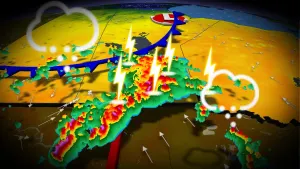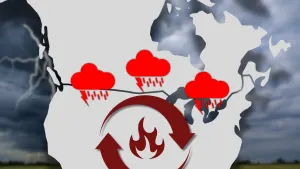
Melting ice caps may set our clocks back one second by next decade
Melting polar ice may speed up the planet’s rotation enough that we could lose a second of time by next decade
The costly effects of climate change may dent more than our wallets by the 2030s. Researchers found that Earth’s rotation is speeding up ever so slightly due to melting ice caps, which could force officials to consider a “negative leap second” by next decade.
If the trend keeps up, this would be our first-ever loss of a second on the clock—a change that could spell chaos for our increasingly tech-dependent world.
DON’T MISS: Watch our seasons go topsy-turvy without leap years
The issue: Earth is a (relative) slowpoke
Earth doesn’t rotate on its axis at a constant rate. Several factors work together to influence our spinning rock in space by slightly speeding up or slowing down its rate of rotation.
Our planet’s molten inner core churns and spins independently from the hard outer crust on which we live. Scientists have found that our inner core is generally slowing down over time, which gradually slows down the planet’s overall rotation rate. The atmosphere and tidal friction also affect Earth’s rotation.

RELATED: Earth just had its shortest day in over 60 years
Climate change is also playing a role in our planet’s spin, according to a paper recently published in Nature by a scientist with the Scripps Institute at the University of California San Diego.
Melting polar ice caps are transferring mass from the land to the oceans. Much like an ice skater pulling in her arms to spin faster, this transfer from the ice caps to the oceans puts more mass closer to the centre of Earth with the effect of speeding up its rotation.
Leap days and leap seconds spare our calendars and clocks
The ability to measure time with incredible precision is a testament to how far human technology has come over the past few centuries.
It’s all the more impressive when you consider that our very concept of time depends on Earth’s precise movements—which turn out not to be all that precise. We adjust for these imprecisions with leap days and leap seconds.
MUST SEE: What would permanent Daylight Saving Time look like in Canada?

Earth takes about 365.25 days to complete one revolution around the Sun. We account for the extra one-quarter of a day by adding a leap day on February 29 every four years to keep our calendars in sync.
Officials also occasionally add a leap second to the clock to account for irregularities in Earth’s rotation on its axis, which add up to make days very slightly shorter than 24 hours.
Adding one second to the clock keeps precise time measured by scientists roughly in sync with solar time. The last official leap second occurred at 23:59:60 UTC on December 31, 2016.
Earth’s rotation speeding up due to climate change is offsetting the natural slowdown in our planet’s spin, delaying from 2026 to 2029 the need to add another critical “leap second” to the clock.
If the trend keeps up, the study says, officials may have to take the unprecedented step of removing a second from the clock instead.
Effects of a negative leap second
It’s easier for tiny devices and massive systems alike to add one second than it is to remove one second from the clock. If this negative leap second becomes a necessity, it could have major ripple effects on computer networks around the world.
SEE ALSO: The length of Earth’s days have been mysteriously increasing
The last such threat to global computer networks likely was the so-called Y2K (Year 2000) Bug—the problem that operating systems and programs couldn't properly handle flipping from the year 1999 to the year 2000.
Despite the fact that it’s become the butt of jokes in recent years, the Y2K issue was a legitimate threat to many computer systems. Engineers spent countless hours of labour fixing code to ensure it didn’t cause an issue.
The fact that no systems collapsed at the turn of the millennium is a testament to their hard work. Today’s crop of engineers may have a similar chance to flex their abilities if a negative leap second is required in the not-so-distant future.
Header image courtesy of Unsplash.










